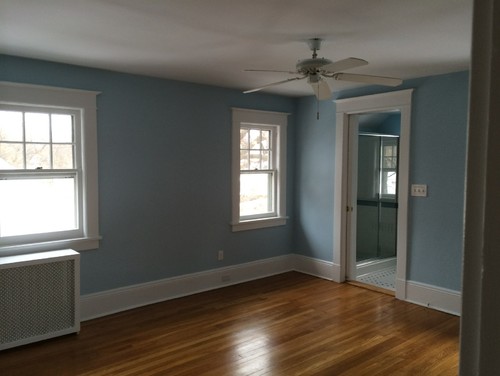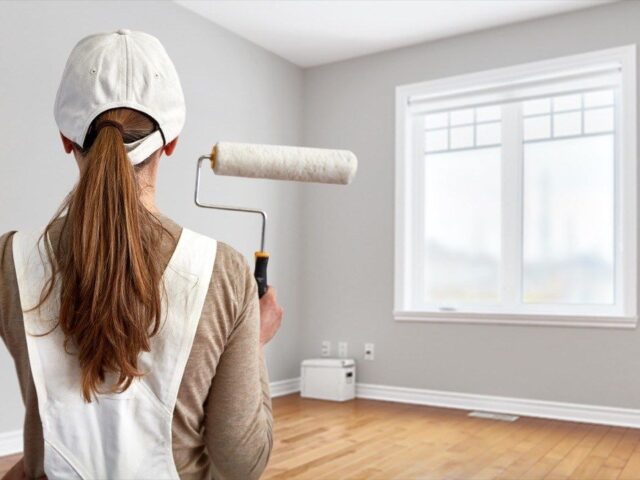Affordable Color Consultation in Lakewood to Transform Your Space with Perfect Hues
Affordable Color Consultation in Lakewood to Transform Your Space with Perfect Hues
Blog Article
Enhance Your Interior Decoration With Comprehensive Color Examination
The combination of shade examination into interior style offers an unique possibility to refine and elevate the emotional and aesthetic vibration of a space. By involving with a seasoned shade specialist, you can browse the complexities of color option, guaranteeing that your selections not only enhance building functions but likewise resonate with personal style and psychological influence.
Benefits of Color Appointment

In addition, shade assessment help in making best use of all-natural light and maximizing spatial perception. Lighter hues can make a space show up even more extensive, while darker tones create an intimate setting. Cleveland Metro Painting Specialists. This strategic application of shade can considerably affect the general ambiance of any interior area
Additionally, professional specialists possess an extensive understanding of timeless classics and current trends, guaranteeing that the selected colors will remain appealing over time. This foresight can save customers from pricey redesigns in the future. Color assessment empowers customers by supplying them with a clear vision and direction, fostering self-confidence in their style choices and inevitably leading to an extra rewarding and successful interior layout result.
Recognizing Color Psychology
The significance of shade psychology in interior decoration can not be overstated, as it looks into the emotional and emotional impacts that various tones can evoke in people. Colors can affect mood, actions, and even performance, making them a critical consideration in any style project.
For circumstances, warm colors such as red, orange, and yellow are often related to energy and heat. They can boost feelings of exhilaration and comfort, making them ideal for social spaces like living kitchen areas or areas. Conversely, trendy colors like blue, eco-friendly, and purple tend to evoke peace and tranquility, making them suitable for rooms or meditation locations.
Additionally, using neutral tones can produce a well balanced environment by enabling the bolder shades to attract attention without frustrating the senses. Understanding these psychological effects makes it possible for developers to develop spaces that not only look cosmetically pleasing but likewise advertise psychological wellness.
Incorporating shade psychology into indoor layout involves a thoughtful selection of hues customized to the designated feature of each space, ultimately improving the total experience for its occupants. This recognition is essential for attaining a useful and harmonious indoor environment.
The Color Wheel Discussed
Recognizing the relationships in between colors is important for reliable interior decoration, and the color wheel functions as an important tool in this procedure. The shade wheel, established by Isaac Newton in the 17th century, shows the spectrum of colors organized in a circular format. It consists of primaries-- red, blue, and yellow-- that can not be created by mixing various other colors. Second colors, created by incorporating primary colors, include green, orange, and purple. Tertiary colors result from blending a main and a secondary color, bring about colors such as green and red-orange.
The shade wheel helps designers comprehend the connections in between shades, including corresponding, comparable, and triadic schemes. Corresponding shades, positioned opposite each other on the wheel, create vibrant contrasts that can invigorate an area. Comparable shades, situated beside each other, give a unified and cohesive appearance. Triadic schemes utilize three uniformly spaced colors, using official source balance and aesthetic interest.
Making use of the color wheel in interior decoration not only improves visual appeal however additionally evokes certain feelings and atmospheres, making it a critical recommendation for shade consultation. Comprehending these partnerships ultimately equips developers to develop spaces that are both practical and aesthetically exciting.
Choosing the Right Scheme
Often, selecting the ideal scheme is a crucial consider achieving a successful interior style task. An appropriate color pattern can combine an area, improve its attributes, and stimulate wanted emotions. To start, consider the purpose of the room. Different spaces serve varied functions and require palettes that show their designated use; for instance, peaceful colors such as soft blues or greens work well in bedrooms, promoting relaxation.
Light can significantly modify exactly how colors show up, so it is vital to assess the room at various times of the day. A harmonious scheme must complement these attributes, creating a natural look throughout the room.
When choosing shades, use the 60-30-10 rule, which suggests that 60% of the room must be a dominant shade, 30% a secondary color, and 10% an accent shade. This ratio makes certain balance and aesthetic interest (Cleveland Metro Painting Specialists). Ultimately, sample shades on the wall surfaces before devoting, as this allows you to see exactly how the hues engage with one an additional and the general setting they produce in your interior decoration project.
Collaborating With a Shade Consultant

When collaborating with a color expert, the procedure normally starts with an initial assessment. During this meeting, you'll review your vision, choices, and the existing components in your room. The expert will certainly examine your requirements and may recommend specific shade schemes that straighten with your objectives.
After establishing a direction, the consultant will certainly give examples and visual aids to aid you imagine the suggested color pattern. This action is vital, as shades can appear differently under differing illumination conditions.
Additionally, a color specialist can direct you in selecting corresponding furnishings, artwork, and devices to balance with your chosen scheme. By collaborating closely, you can achieve a refined visual that raises your interiors pop over here and develops an inviting environment. Inevitably, the know-how of a shade expert can considerably improve the overall effect of your design task.
Conclusion
In recap, extensive color appointment functions as an important tool for boosting interior decoration. By leveraging expert expertise of color psychology and spatial characteristics, a customized color scheme can be developed to stimulate specific emotions and develop a harmonious atmosphere. This strategic technique not just fosters a natural design narrative however also reduces the threat of costly redesigns. Eventually, involving with a color specialist makes certain an informed and visually pleasing end result, elevating the overall experience of the area.
By engaging with a seasoned color specialist, you can browse the intricacies of shade option, making certain that your selections not just complement architectural features but also resonate with personal style and psychological impact. It comprises primary colors-- red, blue, and yellow-- that can not be created by blending various other shades.The color wheel helps developers grasp the relationships in between shades, consisting of corresponding, comparable, and triadic plans.When choosing additional resources colors, utilize the 60-30-10 rule, which suggests that 60% of the room need to be a leading shade, 30% an additional color, and 10% an accent color. By leveraging specialist expertise of shade psychology and spatial dynamics, a tailored shade scheme can be established to evoke particular emotions and develop an unified atmosphere.
Report this page